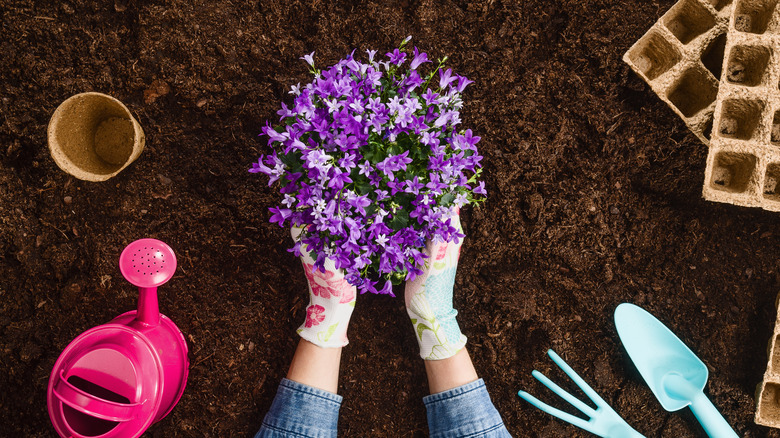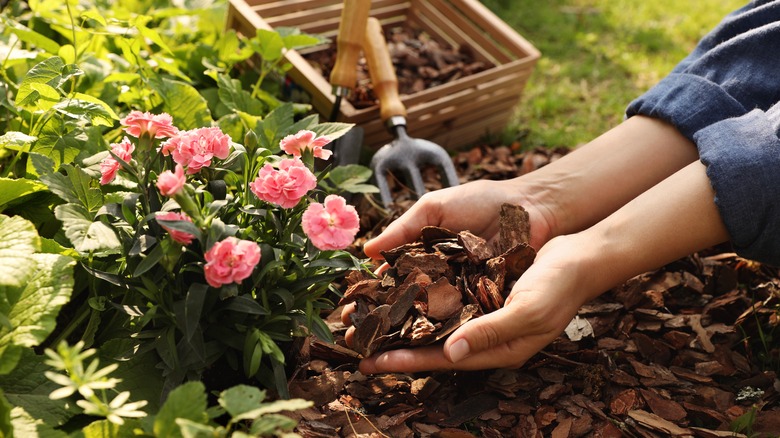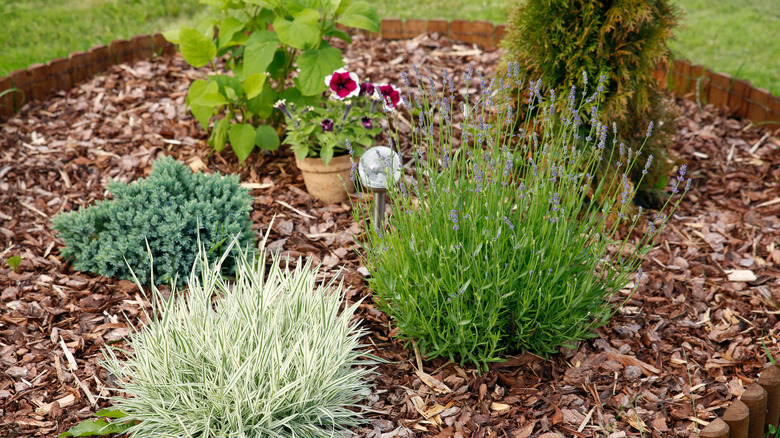Why You Might Consider Using Mulch With Ground Cover Plants (& How To Do It Right)
While ground cover plants are often referred to as living mulch because they'll eventually spread and cover the soil with a thick mat to help prevent unsightly weeds from growing, you might want to consider using some additional mulch if you've only just planted them. Since it takes a little time for the plants to mature and spread, incorporating mulch will stop weeds in the meantime. In fact, not controlling their growth around your young plants is one of those mistakes everyone makes when growing ground cover plants.
As long as you choose the correct type of mulching materials, don't lay it too thickly, and keep it some distance from the base of the plants, it shouldn't prevent your ground covers from spreading. It may also release valuable nutrients into the soil that the plants can use to grow even thicker. Mulch is best used around ground covers that spread either through above-ground stolon or underground rhizomes. But if you're relying on your plants to populate by self-seeding the mulch cover may stop the seeds from coming into contact with the soil and germinating.
Using mulch as weed control for newly planted ground covers
The best time to use mulch around your ground covers is right after you've planted them to help with weed suppression. The annoying shoots will compete with your plants for nutrients and water, so they need to be removed quickly and not permitted to take over. Getting rid of them by hand can be both difficult and time-consuming because you'll have to be careful not to damage the roots of your plants.
For this reason, it's a good idea to cover the soil around your plants with a layer of natural mulch about 2 inches deep. This should successfully stop most weed seeds in the soil from germinating, and those that do manage to break through should be relatively easy to pull out. As it can take some time for your ground covers to become fully established and spread over your garden beds, you might want to replenish the mulch periodically. When laying mulch around your plants, avoid the landscaping mistake that could spell doom for your plants by keeping it approximately 4 inches away from the base of each plant so it doesn't cover the crown and cause rot.
What types of mulches are best to use with ground cover plants?
When applying mulch around your ground cover plants, it's best to select an organic blend that will eventually break down and add important nutrients to the soil. Pine bark is a good choice because it decomposes relatively slowly and also looks quite nice. Similarly, wood chips are also recommended because they'll take a while to decompose and will help to keep those pesky weeds at bay. If you have access to a good supply, you might even want to use pine needles as a mulch around your ground cover plants, as these will form a nice dense coverage to help suppress those unwanted sprouts. They'll also take a few years to break down and won't acidify your soil.
Try to avoid using materials such as lawn clippings or shredded leaves because these are likely to decompose quickly and may even have weed seeds in them. You also want to take care when using inorganic mulches such as gravel and stones, as these could prevent your ground covers from spreading effectively if they're laid too thickly. Now that you know the best types of mulches to use with your ground cover plants, if you're on a budget, there are several ways you might be able to score free mulch for your yard or garden.


